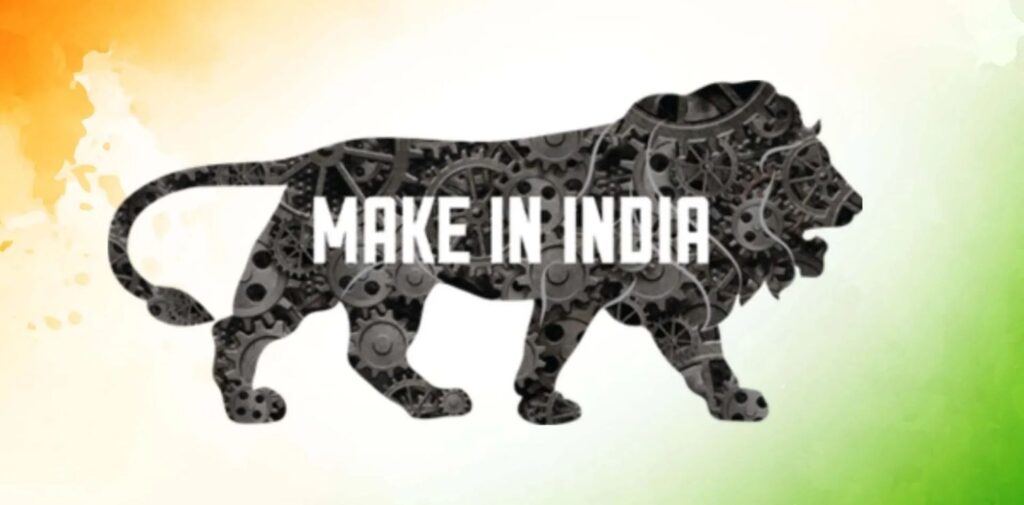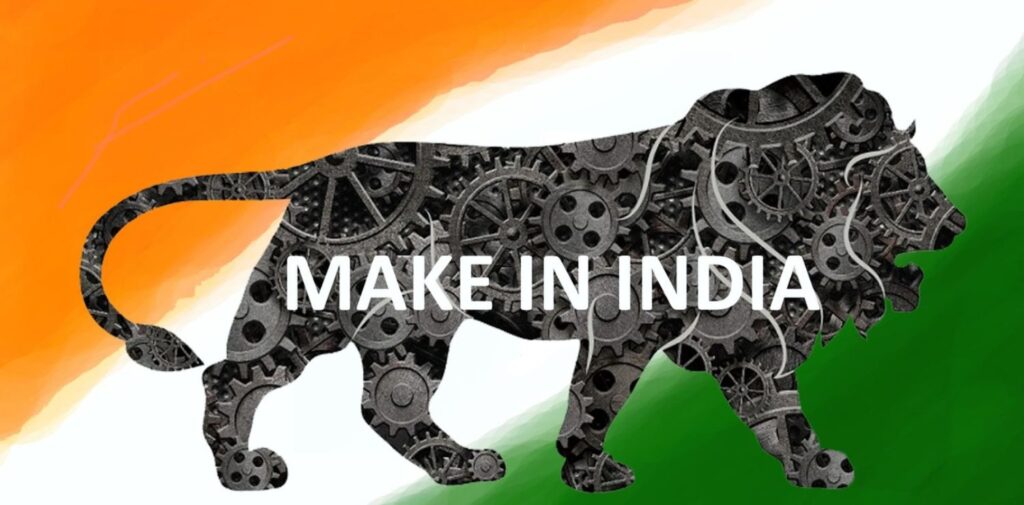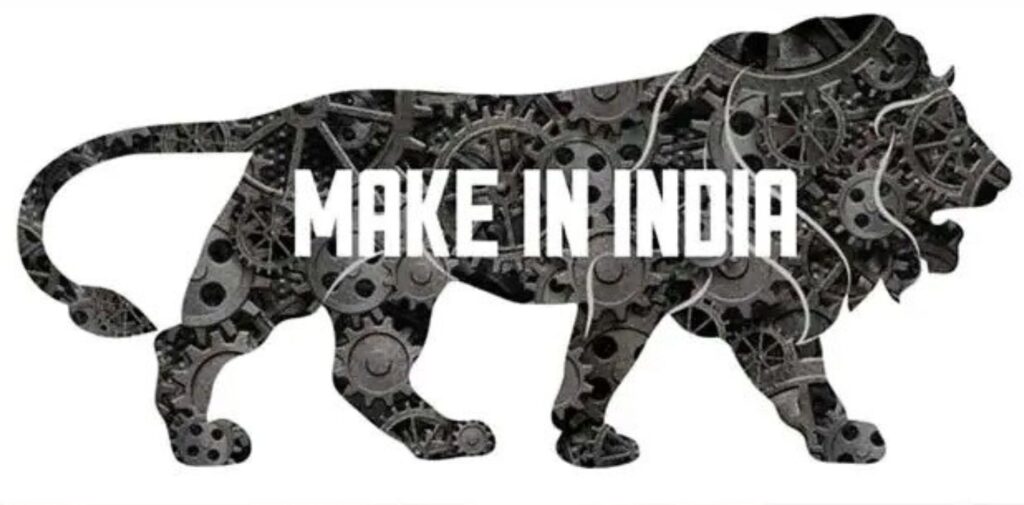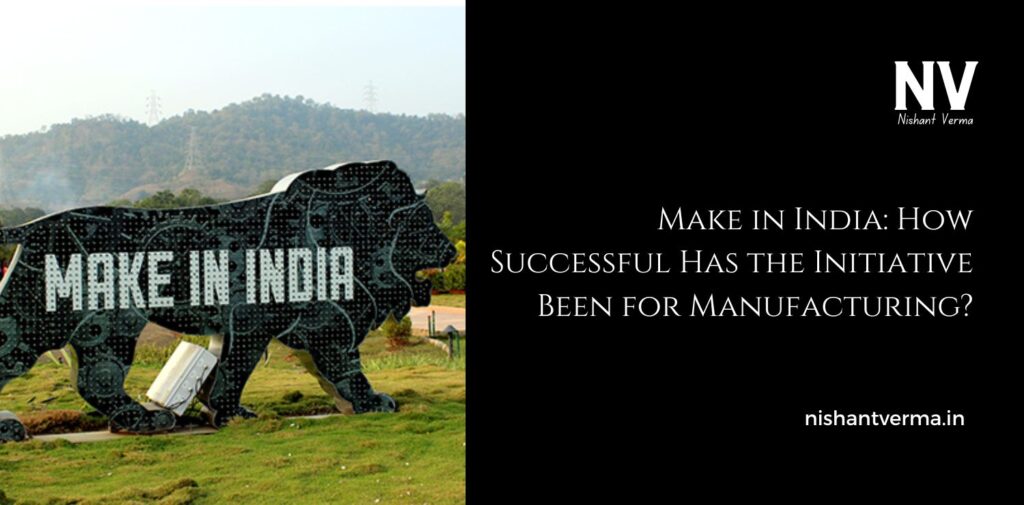In 2014, the Government of India launched an exciting and ambitious program called Make in India. The aim of this initiative was to encourage businesses, both from India and other countries, to manufacture products in India. The goal was to make India a global hub for manufacturing and boost the economy by creating more jobs, improving skills, and increasing the country’s production capacity.
But how successful has Make in India been in achieving its goals? Let’s explore how this program has impacted India’s manufacturing sector, what challenges it has faced, and what the future holds for it.

What is Make in India?
Make in India is a campaign that was launched by Prime Minister Narendra Modi in September 2014. The idea behind this program is simple: to transform India into a global manufacturing powerhouse. The government aimed to encourage both Indian and foreign companies to set up factories in India and produce goods here rather than importing them. This would help increase the country’s industrial growth, improve its infrastructure, and generate millions of jobs for the people.
The program focused on key sectors like automobiles, electronics, textiles, chemicals, food processing, and more. The government promised to make it easier for businesses to operate by reducing unnecessary regulations, providing incentives, and improving infrastructure.
Goals of Make in India
When the Make in India campaign was first launched, it had several key goals:
- Increase Manufacturing Output: India wanted to increase the manufacturing sector’s contribution to the overall economy.
- Job Creation: The initiative aimed to create millions of new jobs, especially for young people.
- Attract Foreign Investment: By making it easier to do business in India, the government wanted to attract investments from foreign companies.
- Boost Exports: By producing more goods domestically, India could sell products to other countries, improving exports.
- Improve Skills and Innovation: Make in India also sought to promote skill development and encourage innovation in manufacturing.
Achievements of Make in India
While there have been challenges, the Make in India initiative has led to some positive changes in India’s manufacturing sector. Let’s look at some of the achievements:
- Growth in Manufacturing Sector: One of the key successes of Make in India has been the growth in India’s manufacturing sector. According to reports, the manufacturing output in the country has grown significantly since the campaign was launched. Many industries, such as automobiles and electronics, have seen growth in their production capacity. For example, India has become one of the largest manufacturers of cars and two-wheelers in the world.
- Increase in Foreign Investment: Before Make in India, foreign investment in India was not as high as it could have been. However, after the initiative was launched, foreign companies began to show more interest in setting up production units in India. Major global companies like Samsung, Apple, and Foxconn have invested in India to produce goods locally, especially in the electronics and mobile phone sectors. This has helped create jobs and improve the country’s infrastructure.
- Growth in Job Creation: One of the promises of Make in India was to create millions of jobs for the country’s young population. Although the number of jobs created has not always been as high as expected, there has been some success in providing employment in certain industries. For example, the automobile and textile industries have seen an increase in jobs due to increased production. The growth of industries in cities like Pune, Chennai, and Bengaluru has led to the creation of new job opportunities.
- Development of Industrial Infrastructure: The Indian government has also focused on improving infrastructure to support manufacturing. Roads, ports, airports, and power supply have been upgraded in many areas to make it easier for businesses to operate. New industrial corridors have been developed, and Special Economic Zones (SEZs) have been created to offer incentives for companies setting up manufacturing units. These efforts have helped create a more business-friendly environment in the country.
- Focus on Skill Development: Make in India has encouraged skill development among the workforce. The government has partnered with various industries to offer training and education programs to improve the skills of workers in fields like engineering, electronics, and manufacturing. This has helped create a more skilled workforce that can meet the needs of modern industries.

Challenges Faced by Make in India
While there have been several successes, Make in India has also faced some challenges. These challenges have slowed down the full realization of the campaign’s goals. Let’s take a look at some of the problems:
- Infrastructure Challenges: Despite improvements in infrastructure, India still faces major challenges. The transportation system, especially roads and railways, needs to be better connected across the country. Power outages, slow-moving bureaucracy, and poor quality of public services continue to make it difficult for businesses to operate smoothly. Many businesses have complained about the high cost of doing business in India due to these infrastructural issues.
- Regulatory Hurdles: Even though Make in India promised to reduce regulations, many businesses still face challenges in navigating India’s complex regulatory system. Starting a business in India can be time-consuming and costly due to various rules and approvals required. This makes it harder for companies, especially small and medium-sized enterprises, to set up manufacturing units.
- Competition from Other Countries: One of the reasons that India’s manufacturing sector has not grown as fast as expected is the stiff competition from other countries like China and Vietnam. These countries have already established themselves as manufacturing hubs with better infrastructure and lower production costs. India still struggles to match their efficiency and cost-effectiveness in many industries.
- Lack of Innovation and Technology: Although Make in India has encouraged some technological advancements, the country still lags behind in innovation compared to other manufacturing giants. India’s manufacturing sector has often been slow to adopt the latest technologies, such as automation and artificial intelligence. This limits the productivity and global competitiveness of Indian manufacturers.
- Labor Issues: The labor market in India remains another challenge. While there is a large workforce available, many workers lack the necessary skills for modern manufacturing jobs. Moreover, labor laws in India can be complicated and difficult for businesses to navigate. This has led to a mismatch between the skills of workers and the needs of industries, slowing down the growth of manufacturing.

How Can Make in India Be More Successful?
While Make in India has seen some success, it still has a long way to go. For it to become more successful, the following measures can be considered:
- Improving Infrastructure: The government must continue to invest in building better roads, ports, airports, and power supply. This would help reduce the cost of production and make it easier for businesses to operate in India.
- Simplifying Regulations: Reducing the number of approvals and making it easier to start a business can encourage more companies to set up factories in India. Clearer rules and faster approvals would make India a more attractive destination for manufacturing.
- Promoting Innovation: India needs to focus more on research and development to stay competitive in global markets. Encouraging innovation and adopting new technologies can help improve the efficiency and quality of Indian manufacturing.
- Addressing Labor Skills Gap: The government needs to invest more in training workers to meet the demands of modern industries. Encouraging vocational education and skill development programs would help ensure that India has a workforce that is ready for the challenges of advanced manufacturing.
- Encouraging Small and Medium-Sized Enterprises: While large companies have benefited from Make in India, small and medium-sized businesses need more support. Providing them with financial aid, access to technology, and better infrastructure would help boost their growth.
Conclusion
The Make in India initiative has certainly brought positive changes to the country’s manufacturing sector. It has helped grow industries, attract foreign investment, and create jobs. However, the full potential of the program has yet to be realized due to challenges like infrastructure issues, regulatory hurdles, and competition from other countries.
With the right improvements and continued focus on innovation, infrastructure, and skill development, Make in India can become a key driver of economic growth and help India become a global leader in manufacturing. The road ahead may be tough, but the Make in India initiative has shown that with the right focus, India’s manufacturing sector can thrive.




